Algae Eaters. They are not only beautiful but help you in many ways. When it comes to keeping an aquarium, one of the most important things you can do is make sure you have algae eaters. Algae can quickly take over and overtake an aquarium if left unchecked, so it’s important to have fish that will consume it.
In this blog post, we will discuss the different types of algae eaters and what requirements each type has. We will also go over the benefits of having algae eaters in your tank!
Types Of Algae
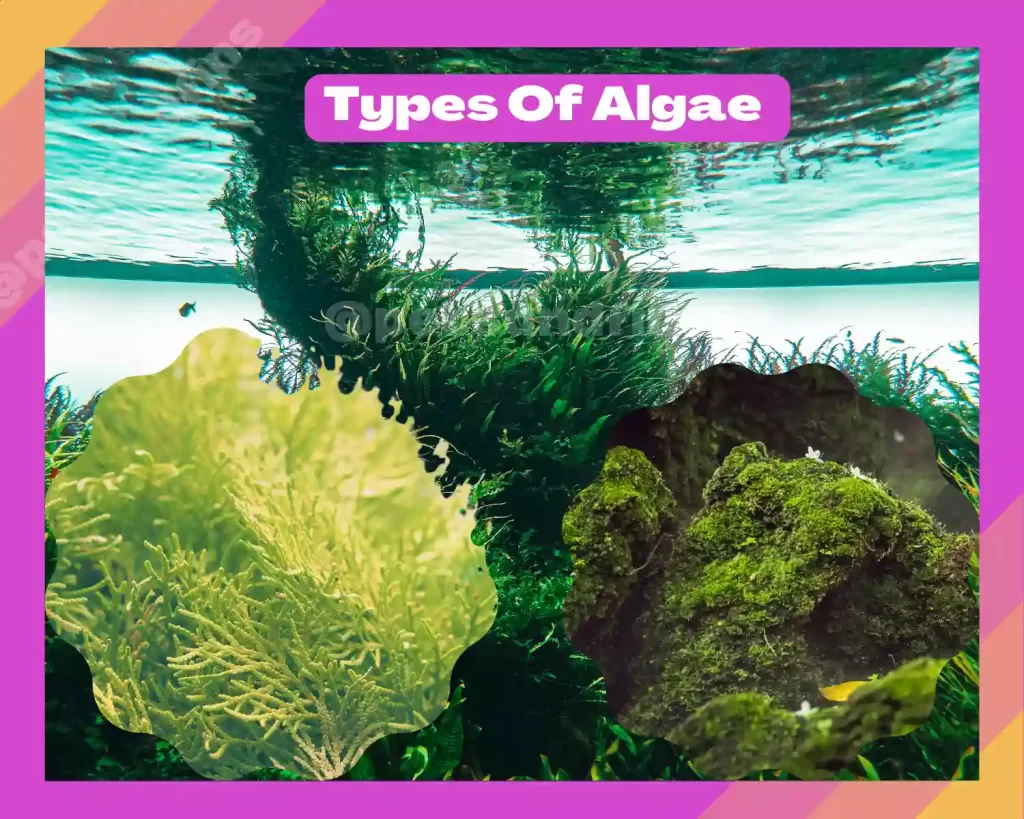
Hair Algae:
Hair algae get its name from its long, stringy appearance. Hair algae are usually green, but they can also be brown or red. While they may look harmless, hair algae can be quite destructive.
They grow quickly and can cover entire surfaces in just a few days. This can cut off the oxygen supply to plants and fish.
Brown Algae:
Brown algae, sometimes found in fish tanks and other water environments is a single-celled plant. The slimy substance that covers your aquarium can be difficult to remove but it’s not dangerous for most types of fish!
This common problem occurs when there are newly set up tanks because they have trouble removing all the brown coating on their surfaces which includes walls as well as decorations such as substrate or plants you’ve grown within them.
Blue-Green Algae:
Blue-green algae, or cyanobacteria, is a type of bacteria that gets its energy from photosynthesis. It’s often found in freshwater ecosystems, and can even be found in some marine environments.
While blue-green algae are normally harmless, they can sometimes become a problem in aquariums. Excess light and ammonia are two of the main factors that can cause blue-green algae to grow out of control.
If your aquarium has a dirty filter or substrate, that can also lead to an algae bloom. Blue-green algae can be difficult to get rid of once it takes hold.
Blackbeard algae, also known as black algae, brush algae, or BBA, is technically known as Audouinella and contrary to the word black belongs to the red algae family. Interestingly, Blackbeard algae get their name from their similarity in appearance to the facial hair of the infamous pirate Blackbeard.
Like Blackbeard’s facial hair, this type of algae is dark and ominous looking. And just like how Blackbeard’s facial hair was said to be made up of intertwined thin strands, Blackbeard algae are also made up of thin filaments that can grow up to three feet in length!
Green Spot Algae:
Green spot algae is a type of green algae that can be seen on glass, plants, and rocks. But what are they? Well, green spot algae are a type of bacteria that can cause problems for your aquarium.
This is because they consume oxygen and nutrients that are essential for your fish. They can also release toxins that can harm your fish or make them sick. So, it’s important to get rid of green spot algae as soon as you see them.
Green Algae:
Green algae, also known as Chlorophyta, are a group of photosynthetic organisms that range in size from microscopic single cells to large multicellular structures.
While most green algae live in freshwater habitats, some species have adapted to life in salt water or even within the tissues of other plants. Green algae are an important part of the food web, and they play a key role in oxygen production and carbon dioxide removal.
Despite their importance, green algae are often considered to be a nuisance organism due to their ability to rapidly colonize areas and create large blooms. In some cases, these blooms can be toxic to other organisms and cause serious ecological problems.
The Need To Have Algae Eaters

Algae-eating fish are an important part of any ecosystem. They are easy to maintain and are mostly self-surviving.
First, they help to keep aquariums clean by consuming algae that can quickly build up on the glass and decorations.
Second, they play an important role in maintaining the ecological balance of an aquarium by keeping algae growth in check.
Third, their appetite for algae helps to improve water quality by reducing the amount of waste and debris in the water.
Fourth, their grazing helps to keep aquarium filters from clogging, which can lead to better filtration and clearer water.
Finally, their presence can add a touch of beauty to an aquarium while also helping to keep it healthy and thriving.
In short, algae-eating fish are an important part of any successful aquarium.
The 29 Top-Rated Algae Eaters
Fish:
Siamese Algae Eater – Crossochelius Oblongus
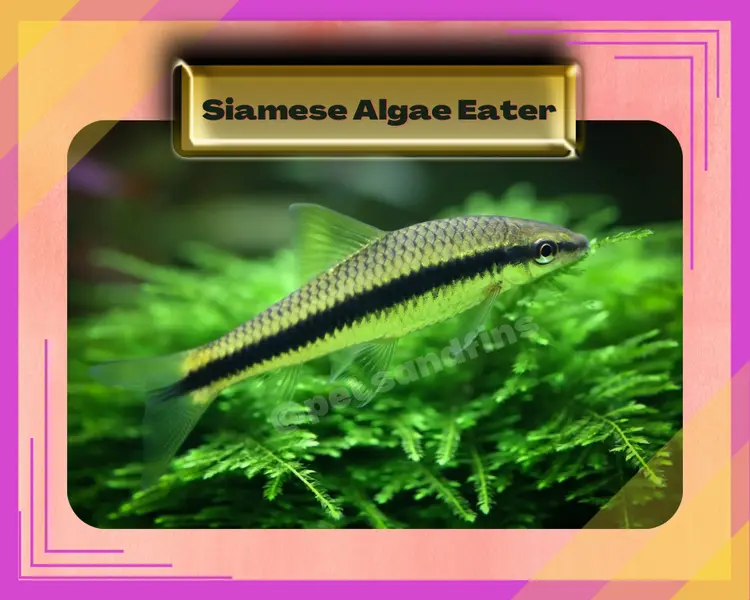
The Siamese Algae Eater (Crossochelius oblongus) is one of the most effective algae eaters around. It’s known for its ability to graze on a variety of algae, including the pesky black beard algae (BBA).
These fish are peaceful by nature and do best in groups. They’re also voracious eaters. When it comes to BBA eaters, there’s simply no better choice than the Siamese Algae Eater.
Siamese Algae Eaters are happiest in a medium-size tank with temperatures ranging from 75-79 degrees. They can live in a PH range of 6.5 to 8.0. So if you’re looking for a fish that can help keep your tank clean and free of algae, the Siamese Algae Eater is the way to go!

Siamese Flying Fox – Crossocheilus Siamensis
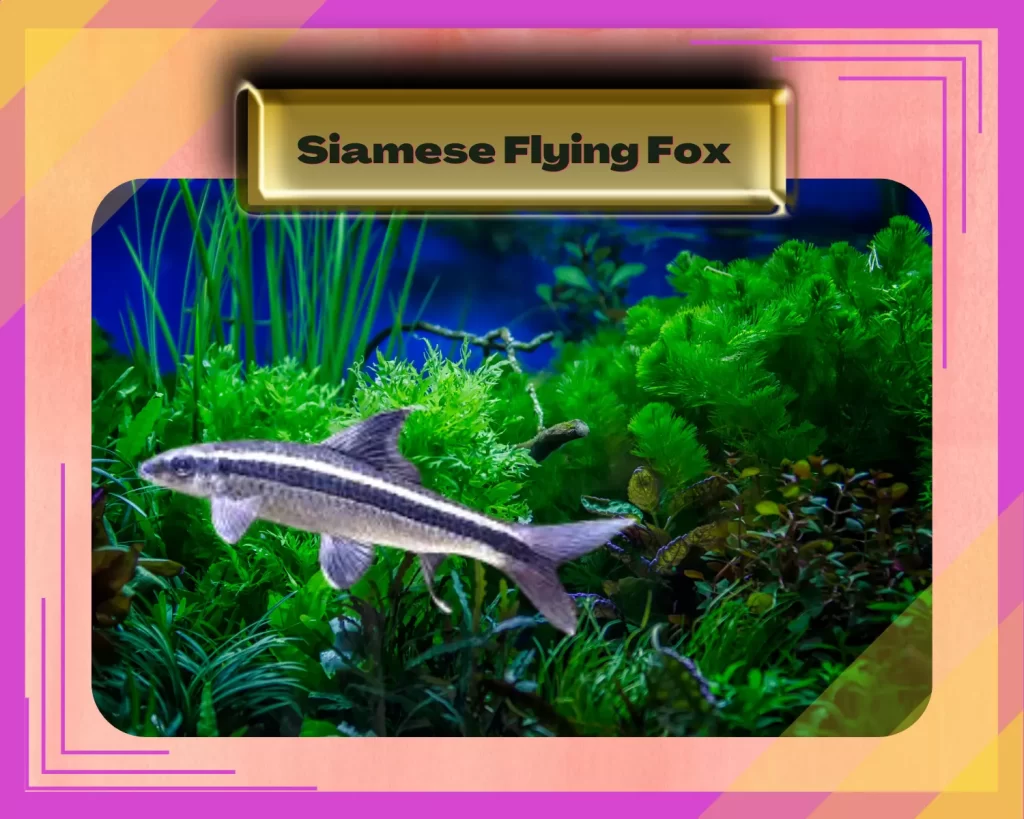
The Siamese flying fox is a peaceful and active creature that will make a great addition to any home aquarium. These little guys are armored with a tough exoskeleton, and they grow to be about six inches long.
Despite their small size, they are voracious eaters and can quickly clear a tank of algae. They are also scavengers, so they will consume just about anything you put in the tank – including other fish!
Because of their diet, it is important to keep them in a tank of minimum of 20 gallons or more with plenty of hiding places. Otherwise, they may become aggressive towards other fish.
The Siamese flying fox is a hardy creature that can tolerate a wide range of water conditions. However, they prefer sandy substrates and warm temperatures between 75 and 79 degrees Fahrenheit and a Ph of 6.5 to 7.0.
With proper care, these fascinating creatures can live for up to 15 years in captivity.

Chinese Algae Eater – Gyrinocheilos Aymonieri
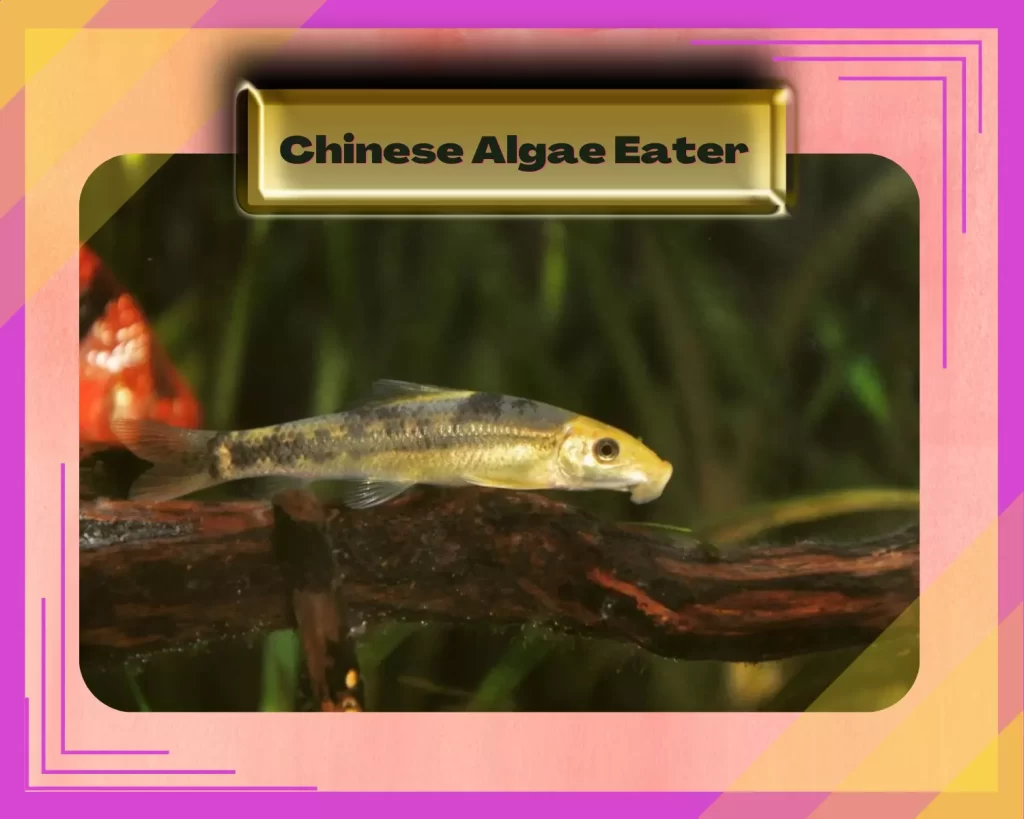
The Chinese Algae Eater is a freshwater fish that is native to Southeast Asia. This fish is a member of the carp family and can grow to be quite large, reaching up to 11 inches in length. So they need large tanks.
The Chinese Algae Eater is an aggressive fish, and while it is typically peaceful towards other fish, it can become quite territorial when it reaches adulthood. This fish is also quite lazy and is known for sitting at the bottom of the tank and not moving much after attaining adulthood.
In terms of diet, the Chinese Algae Eater is a herbivore and feeds on algae and other plant life. These fish are relatively easy to care for but do require some specific conditions to thrive.
For instance, they prefer a pH level between 6.8 and 7.4 and prefer temperatures between 72 – 82 Degrees Fahrenheit. Overall, the Chinese Algae Eater is a unique and interesting fish that can make a great addition to any freshwater aquarium.

Twig Catfish – Rineloricaria Lanceolate
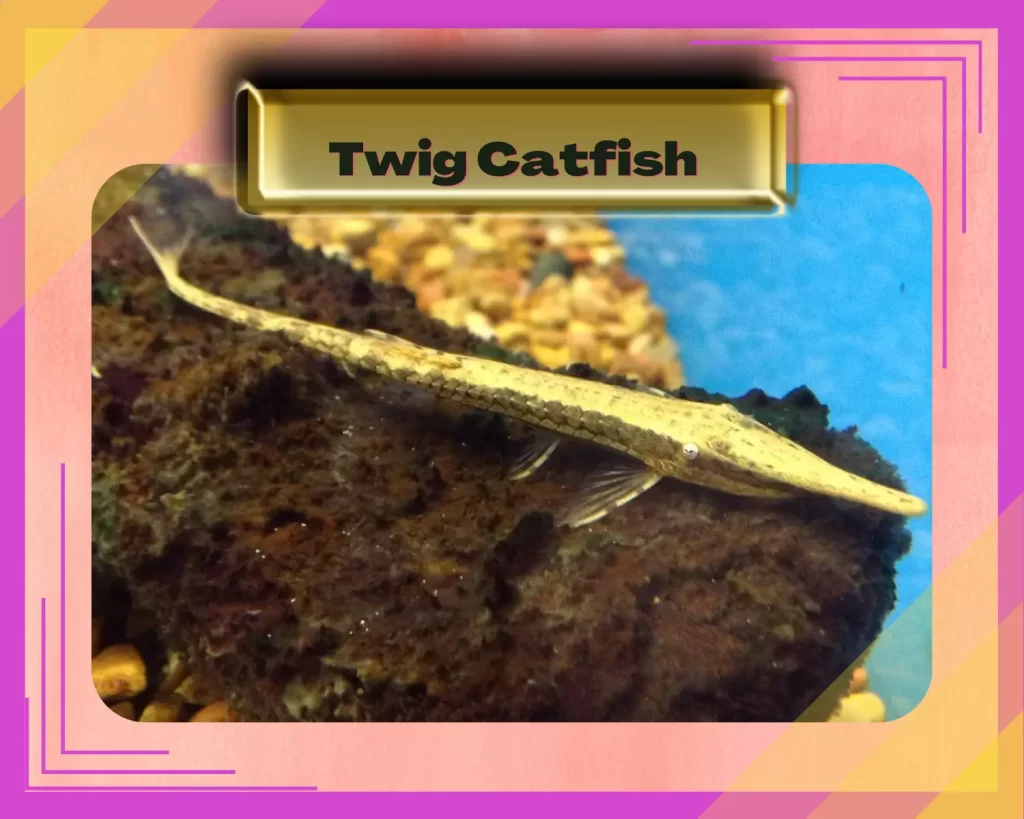
The Twig Catfish is a small, brownish-gray fish that is native to South America. It gets its name from its long, slender body, which resembles a twig. The Twig Catfish is a peaceful fish that is well-suited to life in a community aquarium.
It should be kept in a tank that is at least 12 gallons in size and has a pH of 6-8. The temperature range can be between 75 – 80 degrees Fahrenheit.
The Twig Catfish is an omnivorous fish that will eat most types of aquarium food, including flakes, pellets, and live foods. It mainly feeds on green algae. In the wild, the Twig Catfish feeds on small insects and crustaceans.
The Twig Catfish is a shy fish that likes to hide among plants and other decorations. It is important to provide plenty of hiding places in the aquarium. The Twig Catfish is easy to care for and is readily available from pet stores and online retailers.

Otocinclus Catfish – Otocinclus sp.
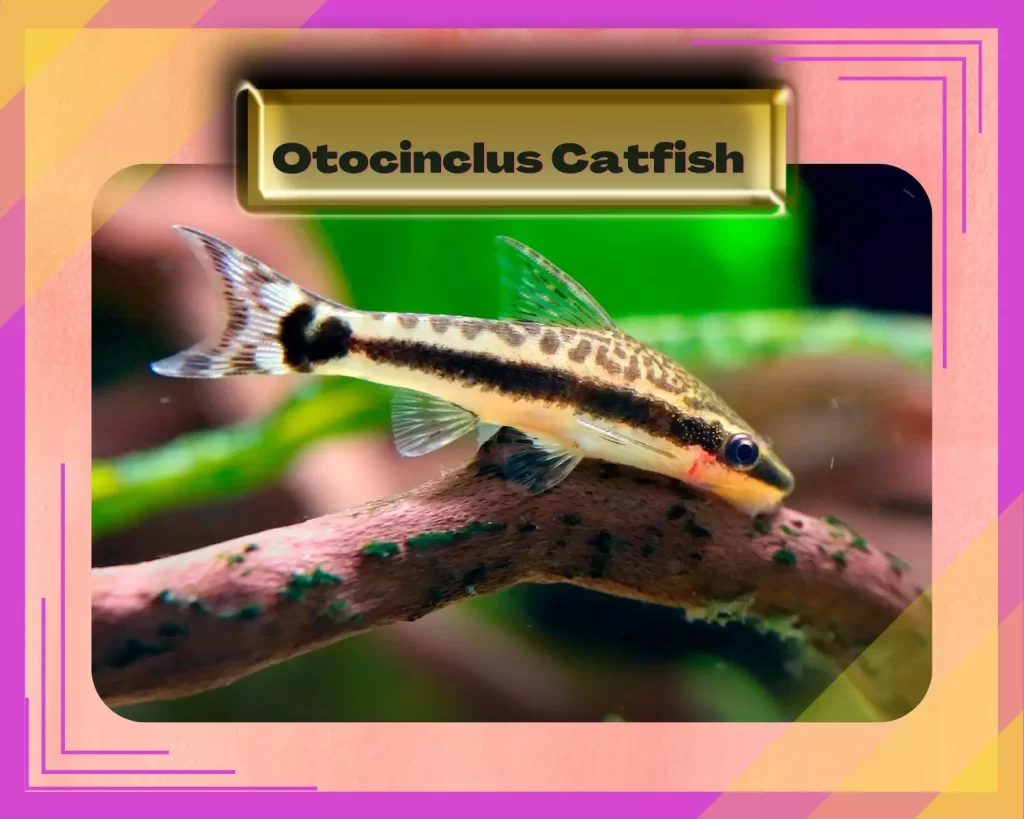
The Otocinclus Catfish, or “Oto” for short, is a freshwater fish that originates from South America. Oto’s are small in size, only reaching up to 2 inches in length when fully grown. Despite their small size, they are voracious eaters and will gladly feast on any algae that they can find.
Otos are so effective at removing algae that they are often used as “cleaner fish” in commercial aquariums. If you’re thinking of adding an Oto to your home aquarium, there are a few things you should know.
First, Otos do best in tanks that are at least 10 gallons in size. They are also relatively timid fish and can be easily bullied by more aggressive tankmates. For this reason, it’s best to keep them with peaceful fish that are of similar size.
In terms of water quality, Otos prefer water that is slightly acidic with a pH of 6.5 to 7.5. They also prefer warm temperatures, between 72 and 82 degrees Fahrenheit. Lastly, Otos need to be fed a diet of green vegetables such as blanched zucchini and green beans.

Whiptail Catfish – Rineloricaria sp.
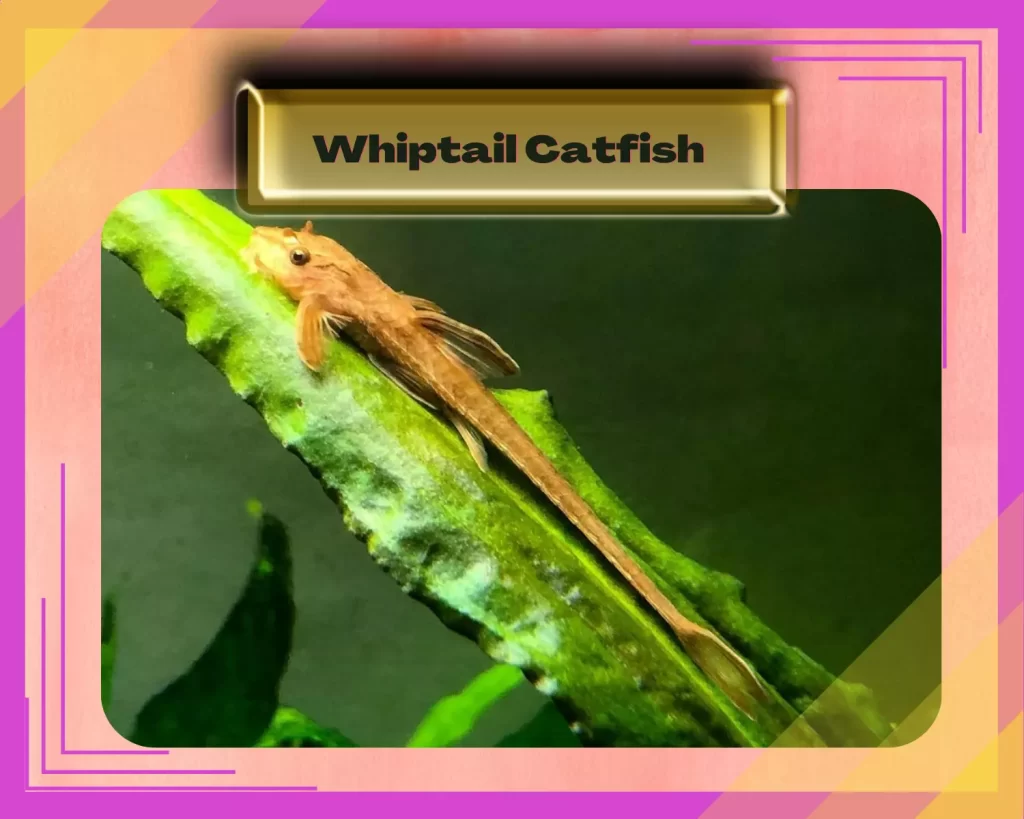
The whiptail catfish (Rineloricaria sp.) is a freshwater fish that is native to South America. These fish are easy to care for and make a great addition to any community tank.
Whiptail catfish are omnivores, so they will eat just about anything. They are also not great algae eaters, so they are suitable for tanks where algae are minimal. These fish do best in tanks that are at least 20 gallons in size with a ph of 6.0 – 7.5.
They also need a soft substrate and prefer waters that are between 73 and 79 degrees Fahrenheit. Whiptail catfish are peaceful fish, but they can be aggressive if they feel threatened. These fish also make a great cleanup crew as they will eat uneaten fish food and green algae.

Mollies – Poecilia Sphenops , Platys & Guppies
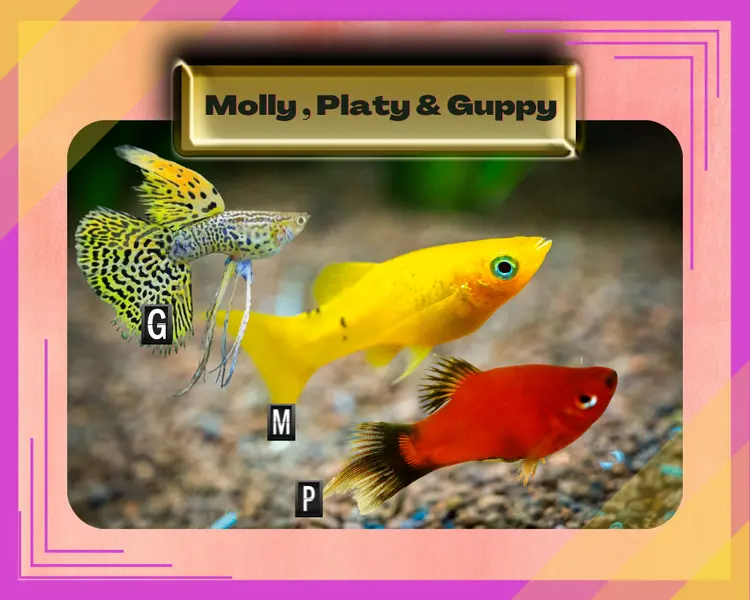
Mollies are a type of fish known as a “livebearer.” This means that they give birth to live young, rather than laying eggs. Mollies are popular aquarium fish, and they come in a variety of colors and patterns.
They are relatively easy to care for, but there are a few things to keep in mind. First, mollies need water with a slightly higher pH (7.5 – 8.5) than other fish. They also prefer slightly warmer temperatures, between 72 and 78 degrees.
They also require some aquarium salt and minerals. Mollies also need plenty of space to swim, so it’s important to choose a tank that is at least 15 gallons. Finally, mollies are peaceful fish, but they can be nippy towards each other.
For this reason, it’s best to keep them in groups of six or more. With proper care, mollies can be a fun and rewarding addition to any aquarium and can be hosted with other livebearers like platys and guppies. They eat hair algae but they need to be fed fish food.

Florida Flag fish – Joranella Floridae
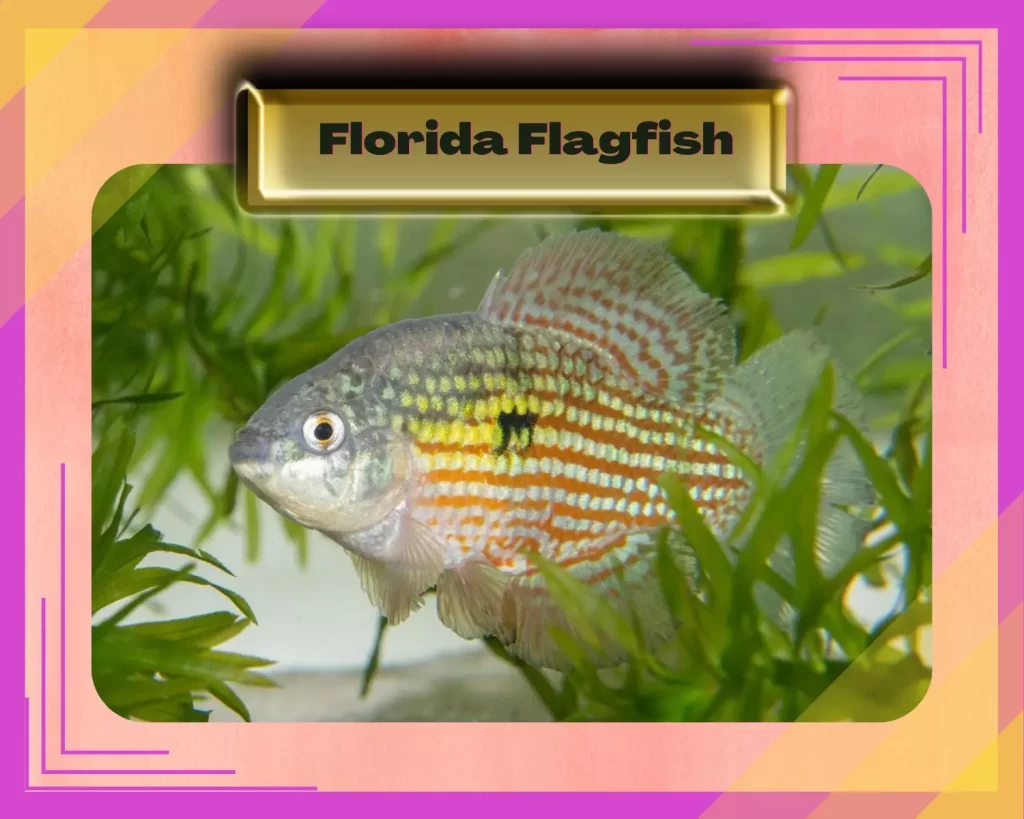
Florida flag fish are a tropical species that originates from brackish waters in the Florida Keys. As their name suggests, they are brightly colored fish that sports a distinctive flag-like pattern on their fins.
They are relatively peaceful fish that makes a good addition to community tanks. One of their key benefits is that they are known to eat hair algae and Blackbeard algae, making them ideal for tank owners who want to keep their tanks clean and free of algae growth.
However, Florida flag fish are also known to be jumpers and can damage delicate plants, so it’s best to keep them in tanks with rocks or driftwood.
They need a Ph between 6.5 to 8.5 and need a minimum tank size of 20 gallons. They are omnivores and need fish food. They live in cooler and unheated tanks with a temperature preferably between 59 – 70 degrees Fahrenheit.

Rosy Barbs – Punitis Conchonius
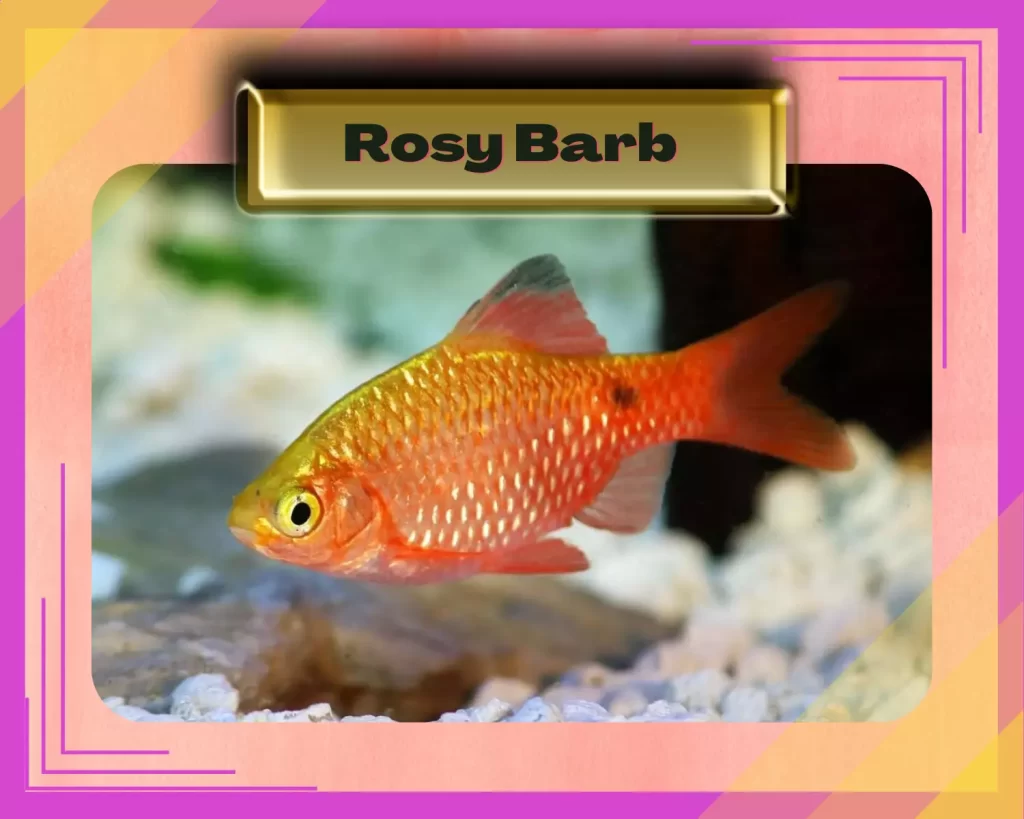
If you’re looking for an active fish that will keep your tank tidy, the Rosy Barb is a great choice. These little guys are constant swimmers and love to nip at fins, so they make a good addition to a tank with ones of their kind.
They’re also great algae-eaters and will help to keep your plants healthy. Just be warned that they may nibble on java moss and other aquarium plants. Rosy Barbs prefer neutral to slightly acidic water, with a pH of 6.5.
They like water that is 64-72 degrees Fahrenheit and should be kept in a tank that is at least 30 gallons. They are not picky eaters and will accept most fish foods, but they do prefer live or frozen foods.
Rosy Barbs are relatively hardy fish but they do need stable water conditions to thrive. If you’re looking for a fun and active fish that will help to keep your tank clean, the Rosy Barb is a great choice!

Doctor Fish / Red Garra – Garra Rufa
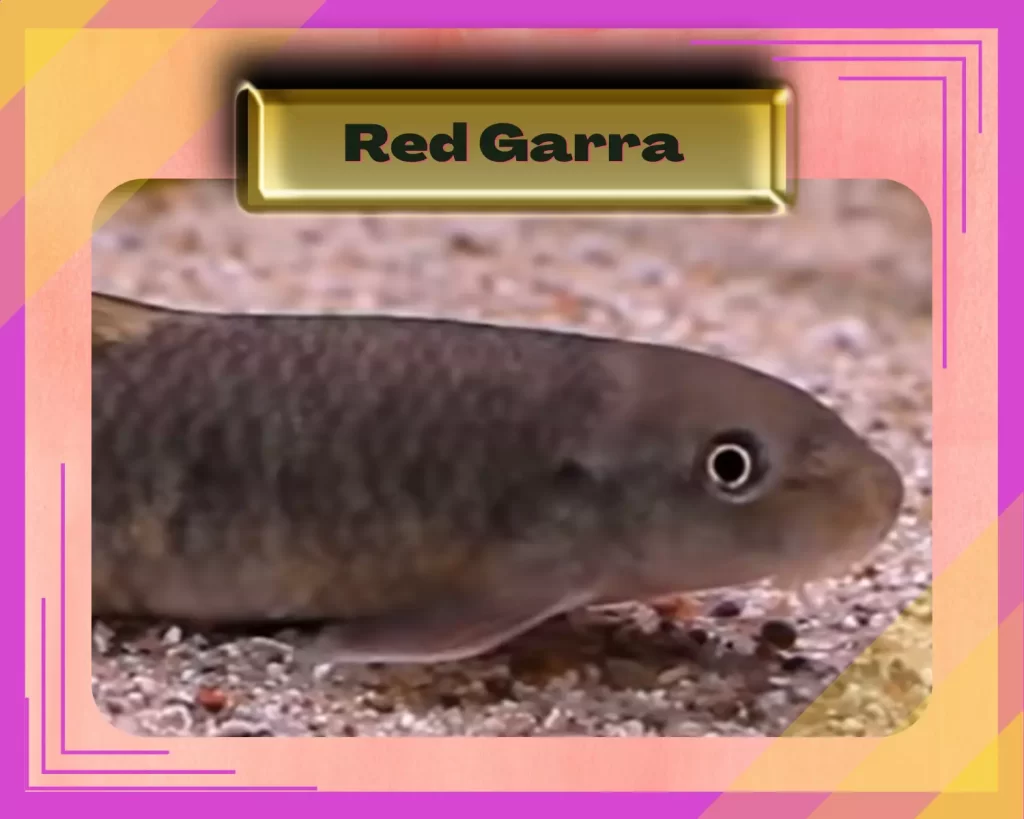
The doctor fish, or red garra, is a unique fish that is native to the rivers of Turkey. As its name suggests, this little fish has a voracious appetite for dead skin. It is often used in spas and salons as a natural and gentle way to exfoliate the skin.
If you’re thinking of adding a doctor fish to your aquarium, there are a few things you should know. First of all, they require a tank of at least 30 gallons. They are also peaceful fish that do well with other peaceful species.
In terms of diet, doctor fish are primarily detritivores, which means they eat detritus, algae, and biofilm. However, they also need some vegetables in their diet. So if you’re thinking of adding a doctor fish to your tank, be sure to include some veggies in their diet!
They thrive in tanks with a pH of 6.0-8.0 and a temperature of 57-68 degrees Fahrenheit. They do not need to be fed, as they will get all the nutrition they need from scavenging around the tank.

African Chichlids – Pseudotropheus sp.

African Cichlids are some of the most beautiful fish in the world. They come in a wide variety of colors and designs, making them a popular choice for aquariums. However, African cichlids are also very aggressive, and more nocturnal than other fish.
As a result, they require special care and attention. African cichlids need a sandy substrate, small rocks, and no plants in their tank. They also require a pH of 7.8 to 8.6, and a temperature of 75 to 85 degrees Fahrenheit.
African cichlids should be fed fish food and algae wafers, and they will eat hair algae. African cichlids are stunning fish that make a beautiful addition to any aquarium. However, they require special care on their ph levels and tank size of 30 gallons for a start.
Once they settle, they are tough fish and will do well.

Reticulated Hillstream Loach – Sewellia Lineolata
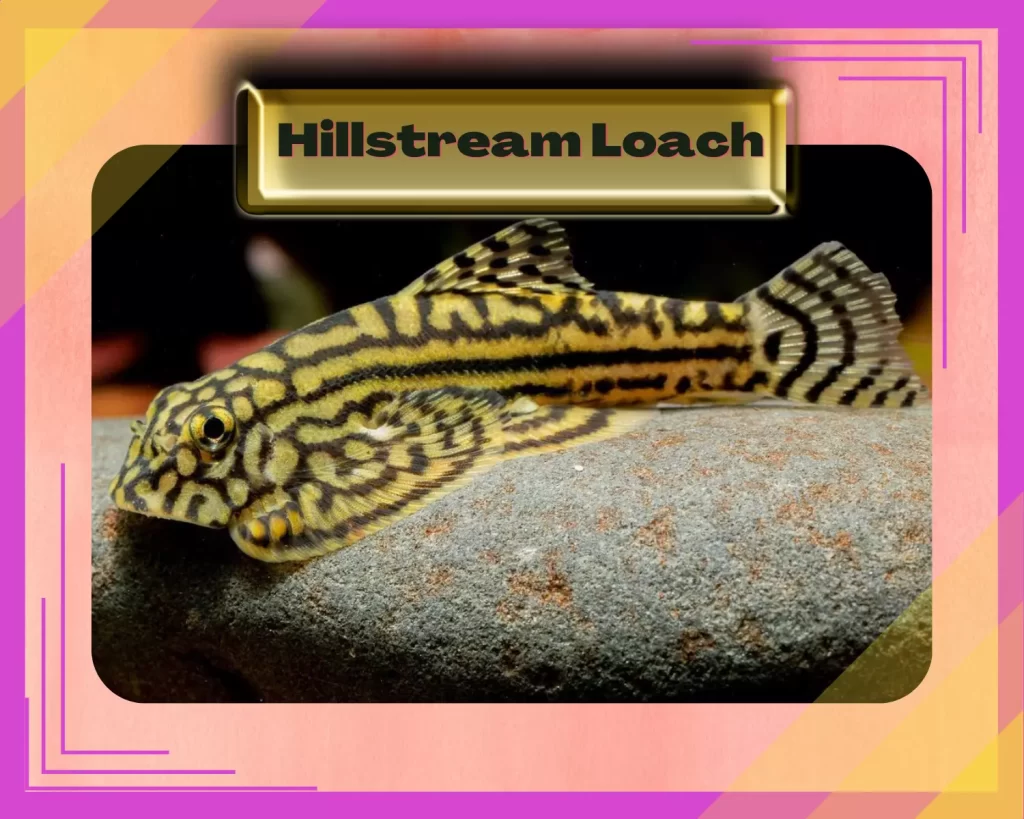
The Reticulated Hillstream loach, (sewellia lineolata), is a freshwater fish that originates from Southeast Asia. As its name suggests, this loach has a reticulated pattern on its body.
It is also a miniature sting ray look alike, and is often referred to as a “miniature sting ray”. The Reticulated Hillstream loach is a peaceful fish that does well in a community tank. It is an active swimmer and will prefer a tank size of 50 gallons or more.
This fish is not picky when it comes to food and will eat most types of algae. It is important to maintain well-oxygenated water for this fish, as it is susceptible to health problems if the water quality is poor.
The Reticulated Hillstream loach is a beautiful addition to any freshwater aquarium. It needs a Ph between 6.5 to 8.0 and a temperature between 68 – 75 degrees Fahrenheit. It needs to be fed with worms and algae wafers.

Bristlenose Plecostomus – Ancistrus temminckii
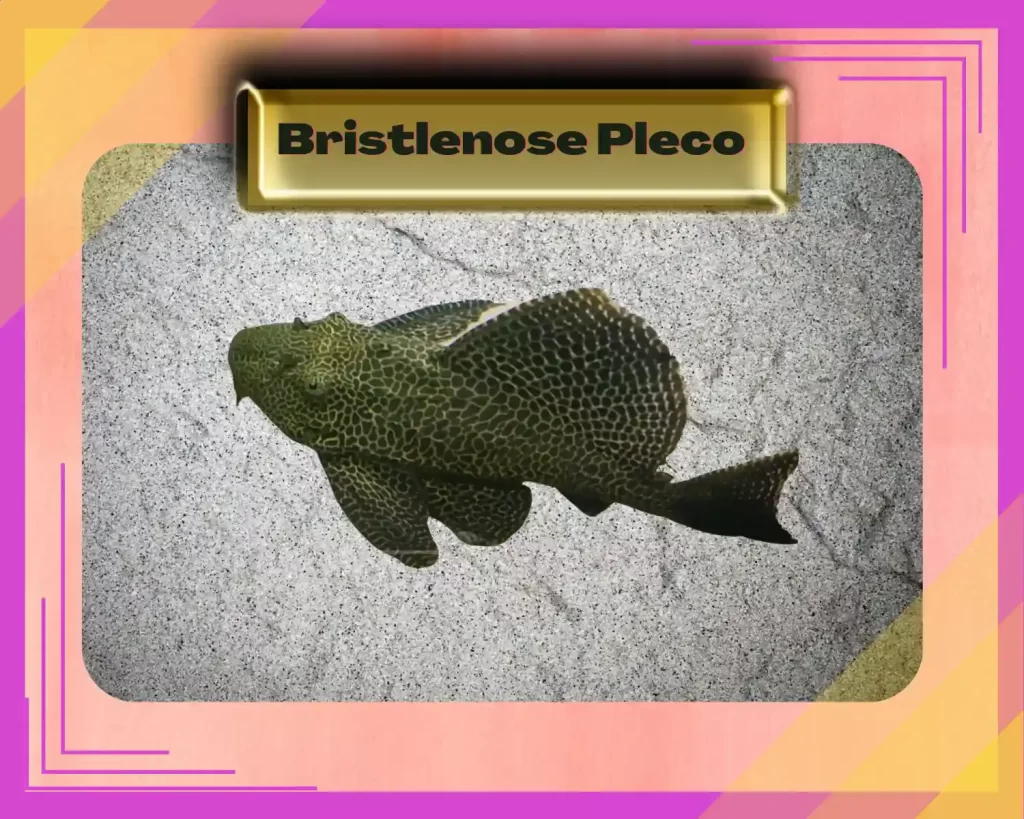
Bristlenose Plecostomus are peaceful little fish that make a great addition to any tank. They are brown algae eaters and do a great job of keeping your tank clean.
They need a Ph between 7.5 to 8.5 and hiding places, and they prefer a temperature of 73-80 degrees. Bristlenose Plecostomus are native to South America and can grow to be about 6 inches long.
They are bottom-dwelling fish, so they do best in tanks that are at least 40 gallons. If you’re looking for a fun and easy to care for fish, the Bristlenose Plecostomus is a great choice!

Sailfin Pleco – Pterygoplichthys Gibbiceps
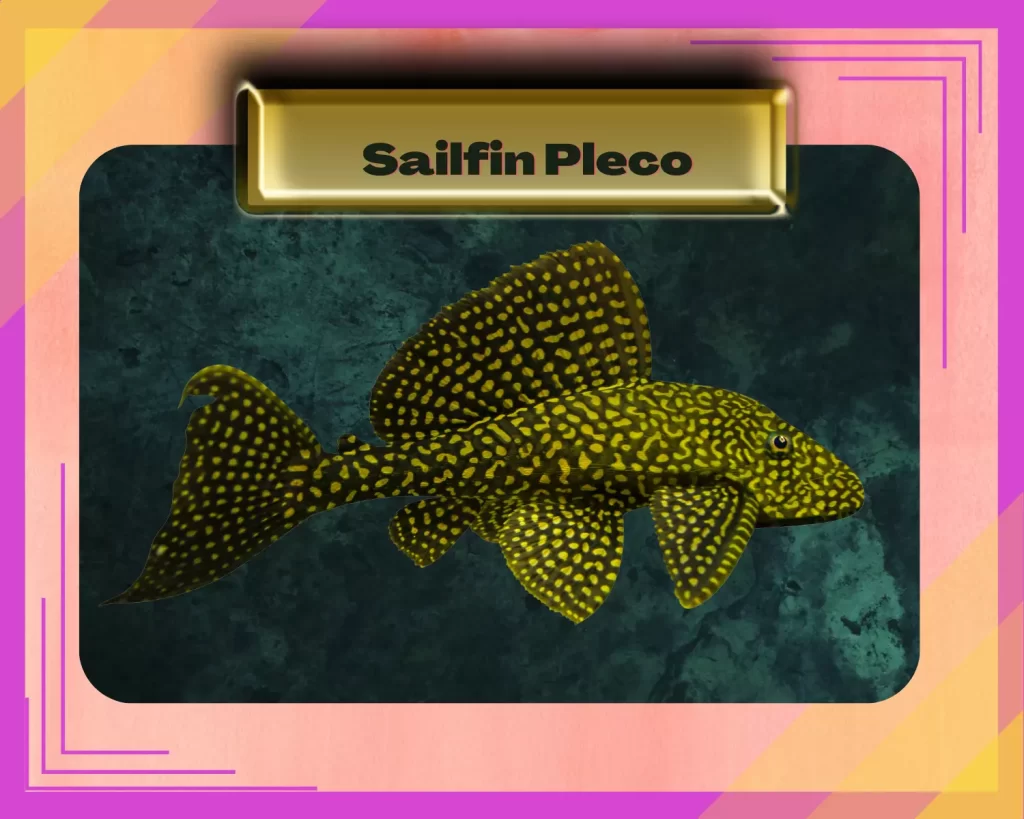
The Sailfin Pleco, also known as the Pterygoplichthys Gibbiceps, is a freshwater fish that originates from Brazil. These peaceful bottom dwellers are typically found in waters with a pH level of 6.5 to 7.4 and a temperature of 73 to 85 degrees Fahrenheit.
When it comes to housing, Sailfin Plecos require a tank size of 100 gallons or more. In terms of diet, these fish enjoy eating algae wafers and blanched vegetables. In addition, Sailfin Plecos need driftwood in their tanks to properly thrive.
As for algae, these fish will consume all types of algae – making them the perfect choice for anyone looking for an aquatic cleanup crew!

Rubber Lip Pleco – Chaetostoma Milesi
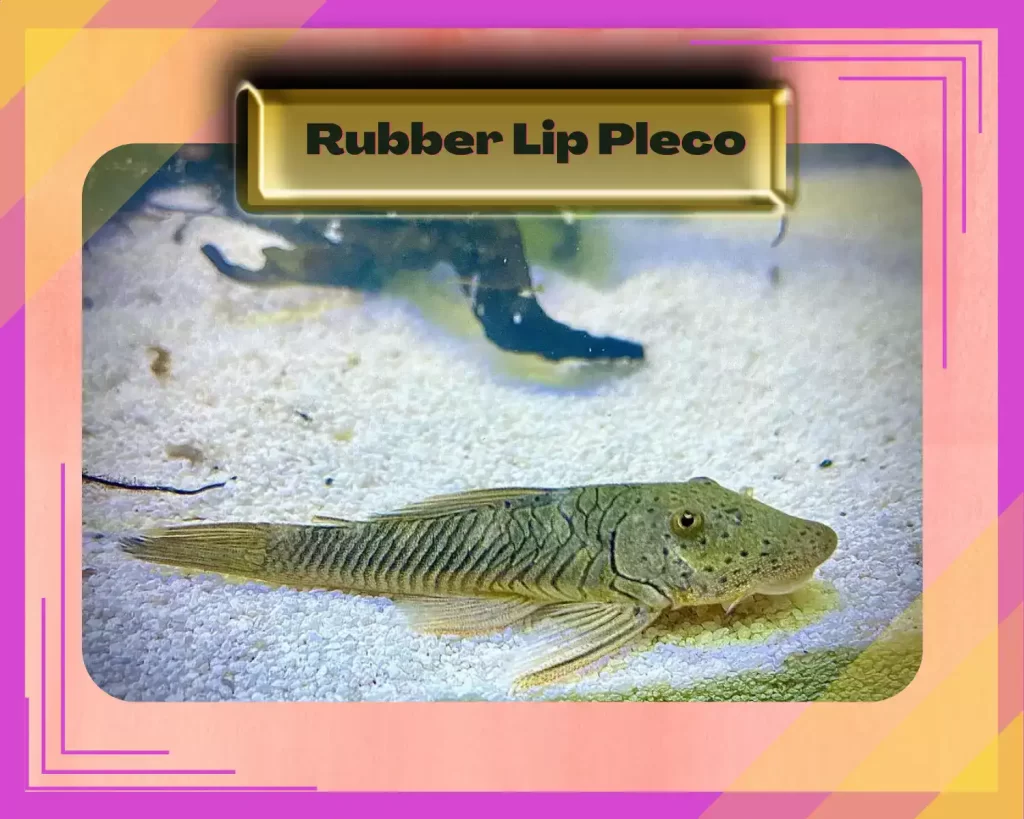
The Rubber Lip Pleco (Chaetostoma Milesi) is a peaceful bottom-dwelling fish from South America. These plecos are known for their unique “rubber-like” lips, which they use to help scavenge for food.
In the wild, Rubber Lip Plecos graze on algae, but in captivity, they will also accept algae wafers and blanched vegetables. These plecos are generally peaceful, but they may become territorial with other bottom-dwelling fish.
Rubber Lip Plecos should be kept in a tank of at least 25 gallons, with a pH range of 6.5 to 8 and a water temperature of 72 to 80 degrees Fahrenheit. These plecos also require plenty of plants in their tank, as they like to graze on algae.
So if you’re looking for a unique and peaceful pleco for your aquarium, the Rubber Lip Pleco might be a perfect choice!

Goldfish – Cyprinidae Famil
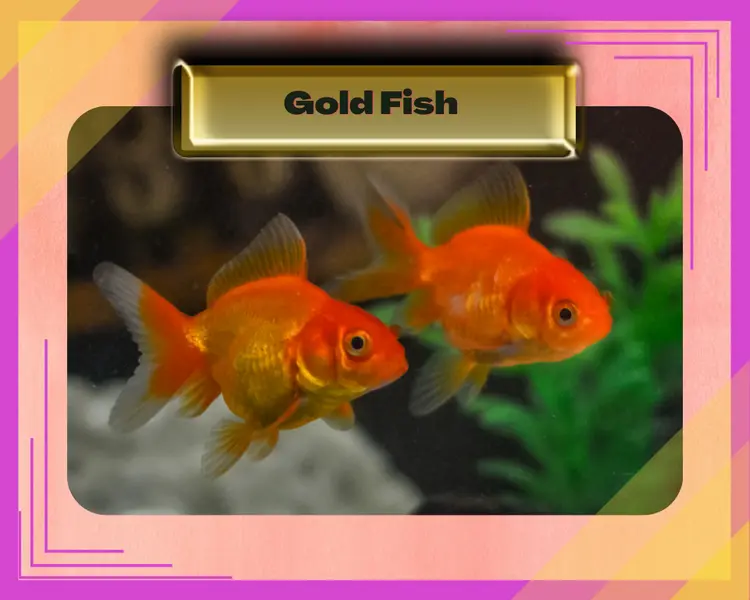
Goldfish are often thought of as simple creatures that are easy to care for. However, there is more to these popular pets than meets the eye. For instance, did you know that goldfish are a member of the Cyprinidae family?
This family includes carps and minnows, and goldfish are one of the most popular varieties. Goldfish are also peaceful creatures that do well in communal tanks. They are often used as dither fish to help reduce the stress levels of other fish.
When it comes to caring, goldfish are relatively easy to please. They prefer a pH level of 6 to 8 and a temperature of 68 to 76 degrees Fahrenheit. They also need a tank that is at least 20 gallons in size.
As for food, goldfish will eat just about anything available, including algae. However, they are not fish that can be purchased as algae eaters. It is just an extra benefit if you have them. Goldfish need high-quality fish food as well.
With proper care, goldfish can make rewarding and long-lived pets.

Snails:
Nerite Snail – Neritina sp
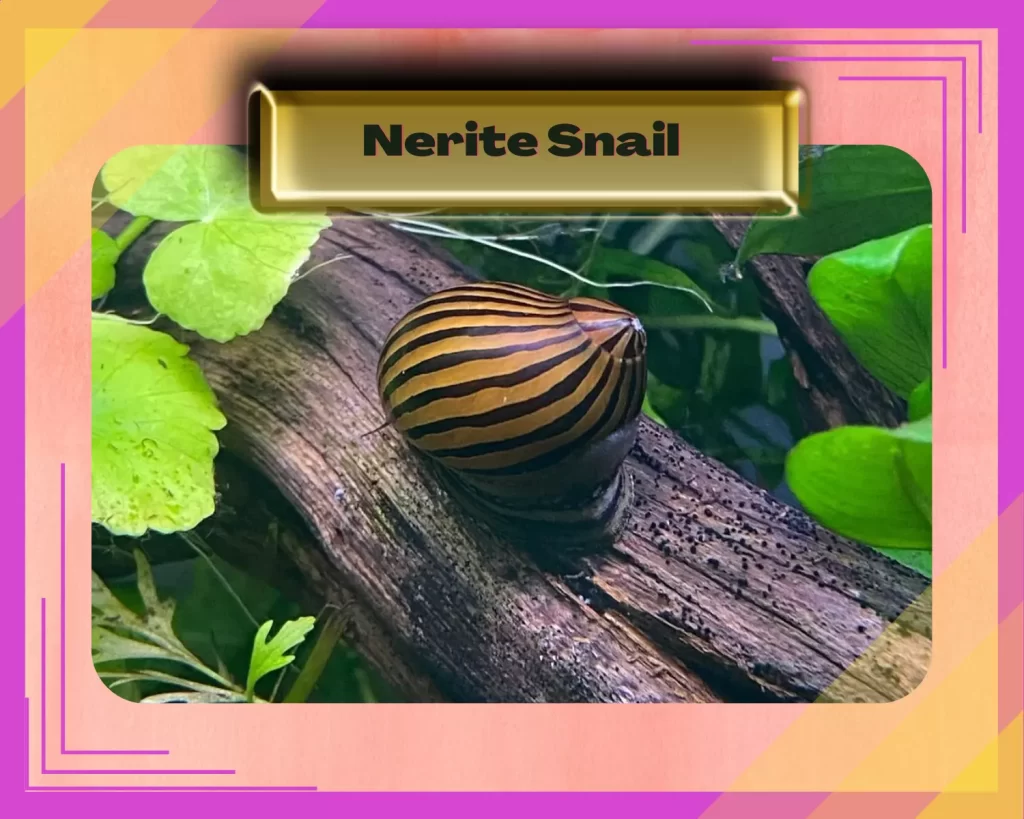
The Nerite Snail is one of the most popular snail choices for aquariums because they do an amazing job of eating algae and they don’t breed in freshwater like other snails. They are very peaceful and make great companions for other peaceful fish.
They need brackish water to breed, so if you have them in a freshwater tank, you don’t have to worry about them taking over your tank! They are also very easy to care for and only need a few simple things: a nice tank (5 gallons or more), some green leafy vegetables to eat if there are no algae in the tank, and 65-85 degrees Fahrenheit slightly acidic water (pH 6.5-8.5).
Nerite Snails are one of the best choices for anyone looking to add a helpful, low-maintenance snail to their aquarium! However, they just don’t eat hair algae or Black Beard Algae.

Ramshorn Snail – Planorbidae
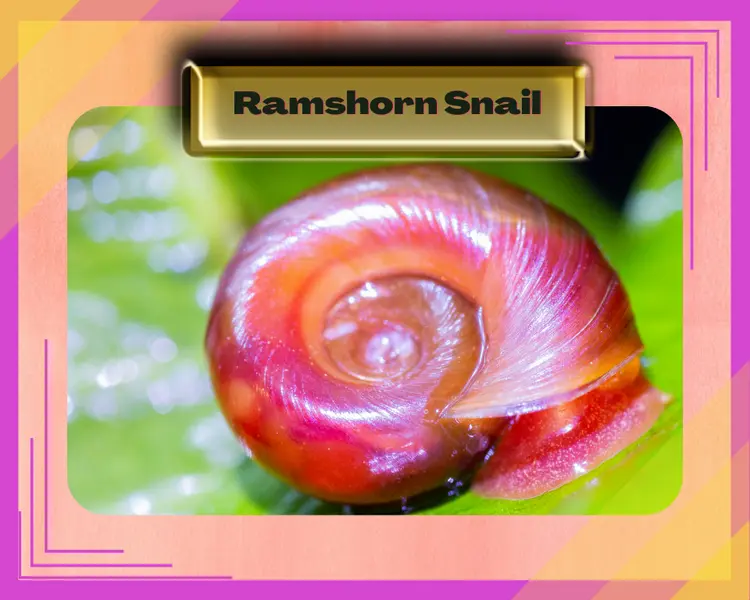
The Ramshorn snail is one of the most fascinating creatures in the aquarium world. These unique little creatures are known ]for their curious shape and their voracious appetite for soft green algae.
With their capacity to live in small tanks starting from 5 gallons, they are peaceful by nature. However, they can quickly decimate a live plant population if left unchecked. As a result, they are best kept in tanks that do not contain live plants.
In addition to their love of algae, Ramshorn snails also require well-oxygenated water and a diet of blanched vegetables. A temperature of 70 – 78 degrees Fahrenheit is ideal for them. A neutral Ph of 7.0 – 7.5 is what is required.
With proper care and some hard water for their shells, these captivating creatures can thrive in any aquarium environment.

Mystery Snail – Pomacea Bridgesii
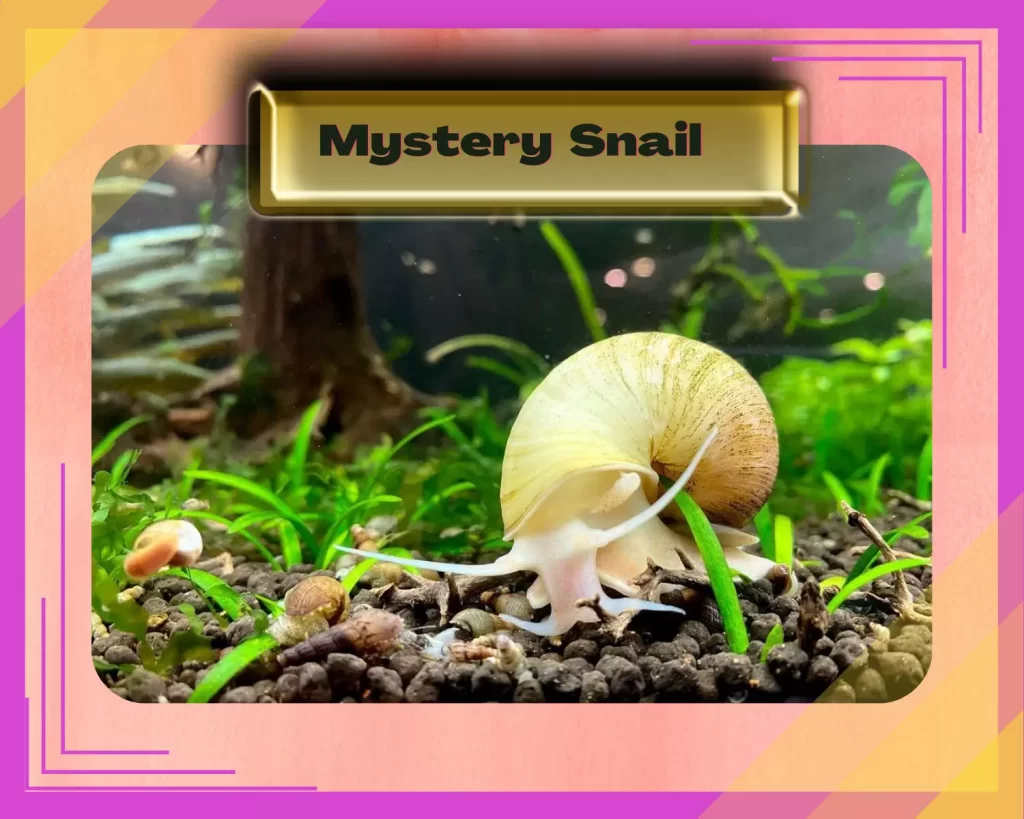
The mystery snail is a type of Apple snail, but not all Apple snails are mystery snails. This is an important distinction. Mystery snails are peaceful and easy to care for.
They need copper-free water, plants, and rocks. They will eat all algae except black beard algae. Feeding them algae wafers occasionally is sufficient.
The ideal pH for mystery snails is 7.6 – 8.4, and the ideal temperature is 68 – 84 degrees Fahrenheit. They tolerate a wide range of temperatures, so you don’t have to be too worried about that.
Tank size should be 5 gallons or more. However, they are vulnerable to predators, and so, they can’t be kept with predatory fish. That’s all you need to know about mystery snails!

Malaysian Trumpet Snail – Melanoides Tuberculata
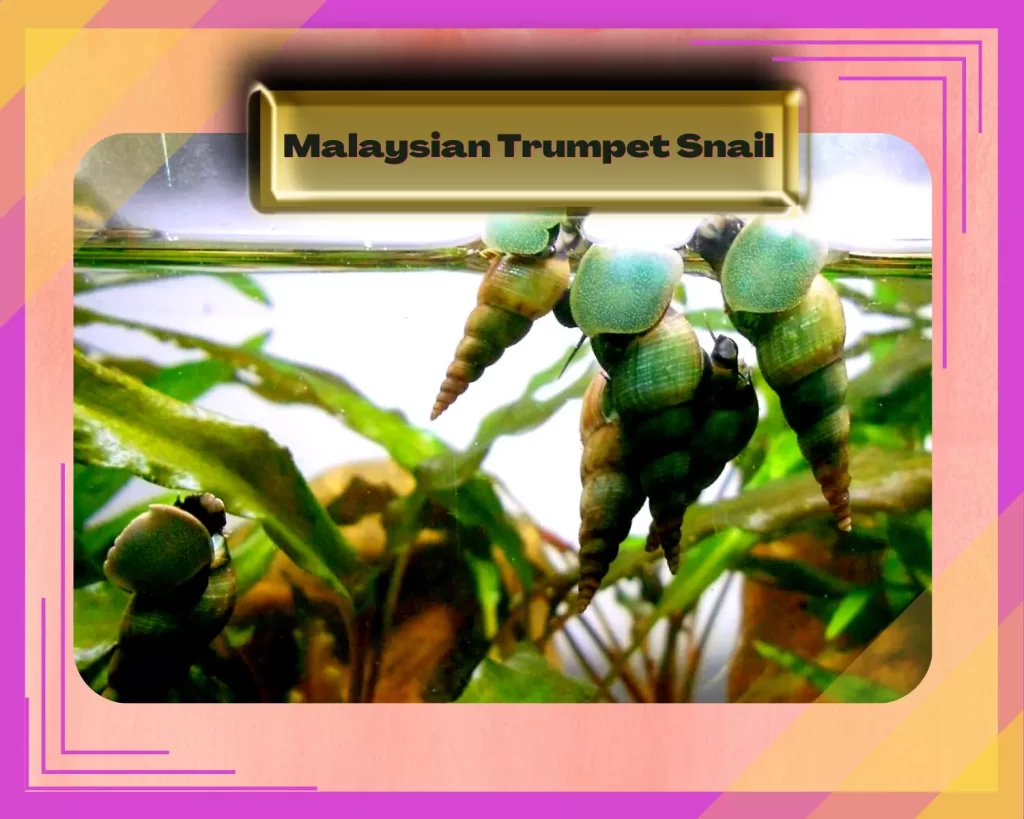
The Malaysian Trumpet Snail is a small, unassuming creature that is often overlooked by aquarists. Despite their humble appearance, these snails are quite versatile and can be a valuable addition to any tank.
Malaysian Trumpet Snails are quick to reproduce, so it’s important to keep an eye on their population size. They’re also not suitable for tanks with rooted plants, as they tend to uproot them in search of food.
These snails are peaceful and typically only eat algae, though they will occasionally nibble on other plant life. Malaysian Trumpet Snails prefer water with a pH of 7.0-7.5 and a temperature of 70-78 degrees Fahrenheit.
They can live in tanks as small as 10 gallons, but they will thrive in larger tanks. Overall, Malaysian Trumpet Snails are low-maintenance pets that can help keep your tank clean and free of algae. They need copper-free water and algae wafers if there are no algae in the eco-space.

Rabbit Snail – Tylomelania
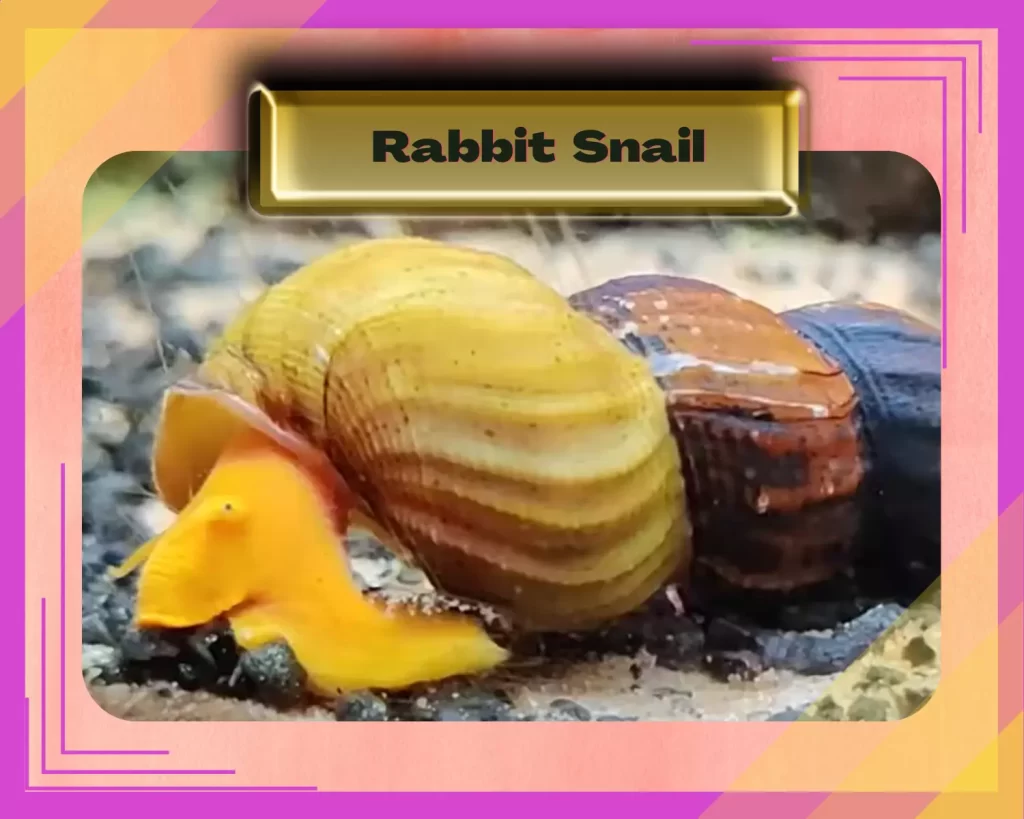
The rabbit snail, or Tylomelania, is one of the largest species of snail, capable of reaching up to five inches in size. Unlike many other types of snails, rabbit snails are not plant-eaters and prefer a diet that consists mostly of java ferns and other plant matter.
In terms of water conditions, rabbit snails do best in a tank with a pH of 7.3 to 8.5 and a temperature range of 68 to 86 degrees Fahrenheit. Because they can grow quite large, rabbit snails need a minimum tank size of 30 gallons.
In terms of feeding, algae wafers and sinking pellets are typically sufficient to keep them healthy and happy. Rabbit snails are generally peaceful creatures, but they do require some specific care to thrive.
For example, because they consume a lot of calcium, it’s important to provide them with a soft substrate that contains plenty of this nutrient. Additionally, they love to eat algae off of glass, so be sure to let them clean your tank!

Pond Snail – Lymnaea Stagnalis
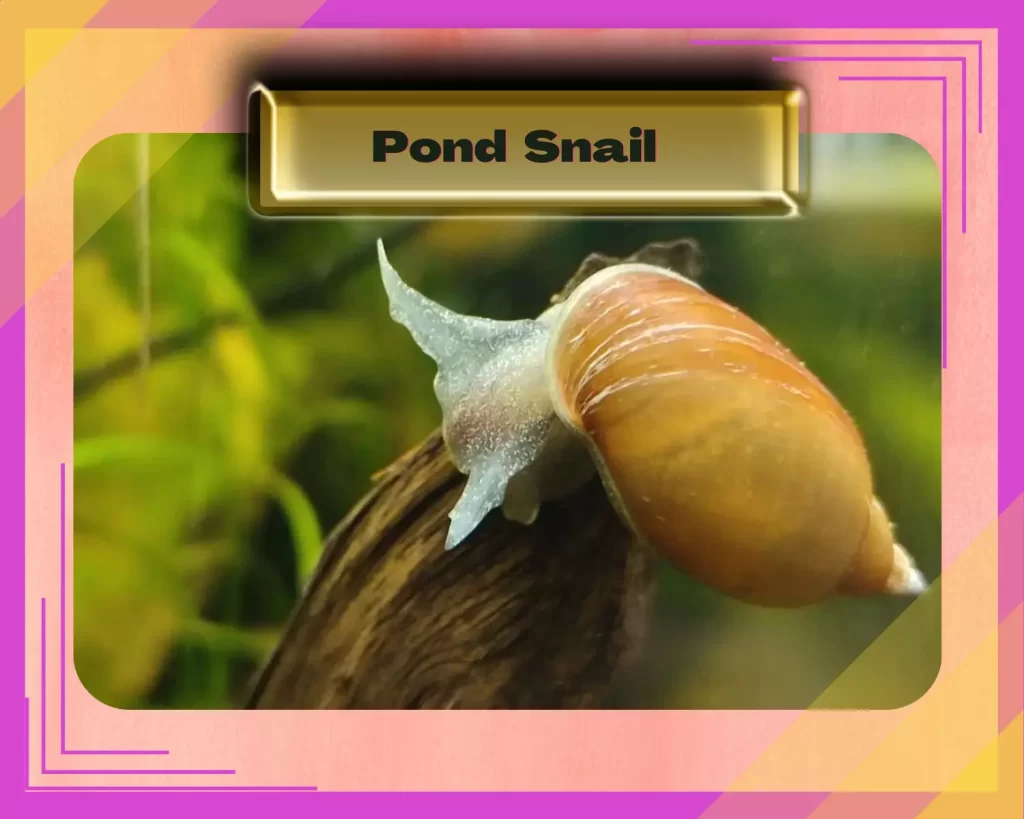
The pond snail is a versatile and hardy creature that can be a great addition to any tank. Though they are not the most exciting creatures to look at, they are very efficient cleaners and will help to keep your tank tidy.
They are also not particularly fussy eaters and will consume almost anything, which can be helpful if you have a lot of leftover food in your tank. However, pond snails do require slow-moving waters and calcium to thrive, so be sure to provide them with an appropriate habitat.
The pond snail is not great for planted tanks because they are known to eat plants. The pH of their natural habitats ranges from 6.5 to 8 and the temperature is usually between 32 and 90 degrees Fahrenheit.
They can live in tanks as small as 5 gallons, but they do better in larger tanks. Overall, pond snails are low-maintenance creatures that can provide many benefits to your tank.

Sun Snail – Clithon Corona

The sun snail, also known as the horned nerite snail, is a nocturnal creature that is native to the Indian and Pacific Oceans. As its name suggests, this snail has a distinctive horn-like protrusion on its shell.
The sun snail is a peaceful and gentle creature that is safe to keep with plants and other aquarium inhabitants. These snails are known for their ability to keep the substrate clean and free of algae. They will only feed if there are no algae present in the tank.
The sun snail is an omnivorous creature. However, they prefer a diet of algae, detritus, and uneaten food. The sun snail requires copper-free water and prefers a pH of 6.5-8.0 and a temperature of 71-75 degrees Fahrenheit. The minimum tank size for these snails should be 10 gallons.

Shrimps
Amano Shrimp – Caridina Multidentata
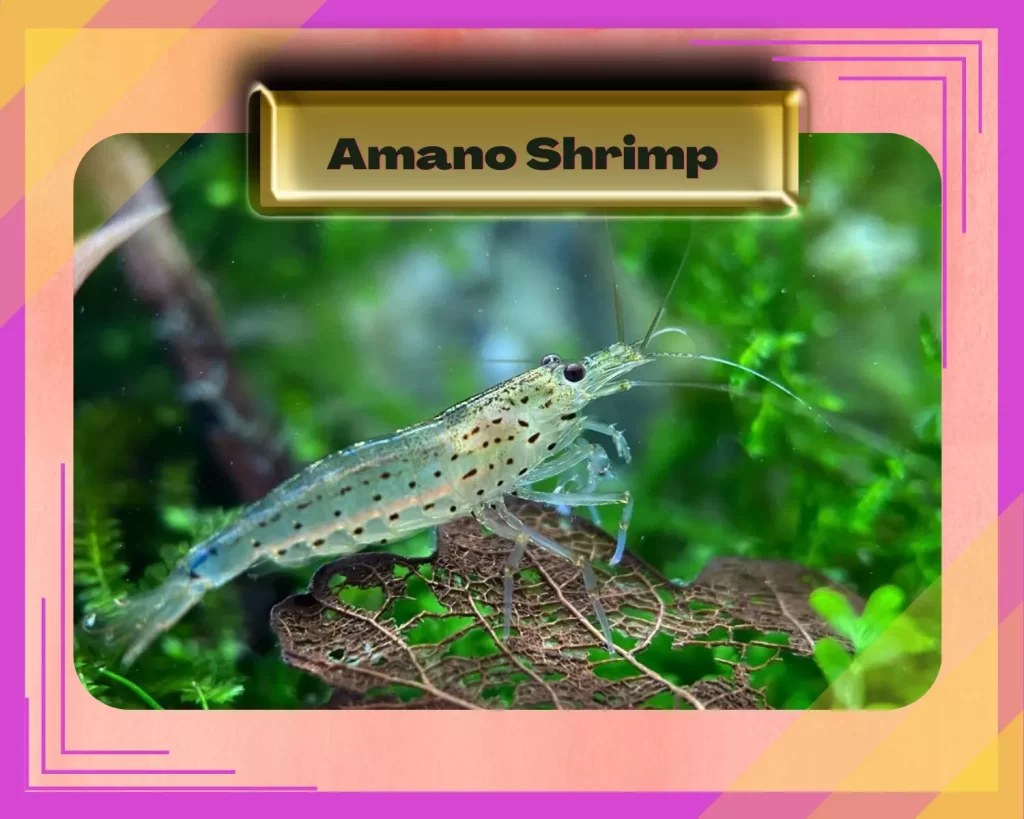
If you’re looking for a little extra help keeping your aquarium clean, the Amano shrimp might be just what you need. These peaceful invertebrates are known for their algae-eating habits, and they can quickly make short work of hair algae, BBA, and other nuisance plants.
Amano shrimp are relatively easy to care for, but there are a few things to keep in mind. First, they prefer slightly acidic water with a pH in the 6-7.6 range. They also prefer cooler water, so if your tank is on the warmer side you may need to provide some additional hiding places and aeration.
However, they can survive between 60 to 80 degrees Fahrenheit. They need a tank size of a minimum of 10 gallons. Finally, Amano shrimp are not picky eaters but they do require a high-quality diet of fish food or shrimp pellets.
If you can provide these things, Amano shrimp make excellent additions to both freshwater and saltwater aquariums. But do remember, they are not compatible with cichlids and goldfish.

Cherry Shrimps – Neocaridina Heteropoda
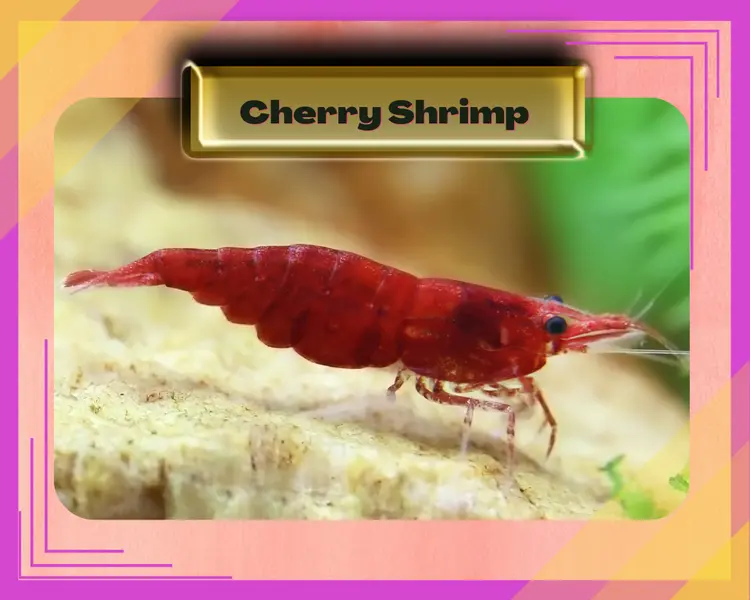
Cherry shrimp are one of the most popular freshwater shrimp for aquariums. They are originally from Taiwan and Thailand, but they can now be found in many places around the world.
Cherry shrimp are peaceful and hard-working, making them a great addition to any tank. They do best in tanks that are at least 5 gallons, with a pH of 7 to 7.8 and a temperature of 72 to 78 degrees Fahrenheit.
Cherry shrimp also need dark substrates and copper-free water. They will eat all types of algae, so they are a great way to help keep your tank clean. If you’re looking for a new shrimp for your aquarium, consider cherry shrimp!

Ghost Shrimp – Palaemonetes Paludosus
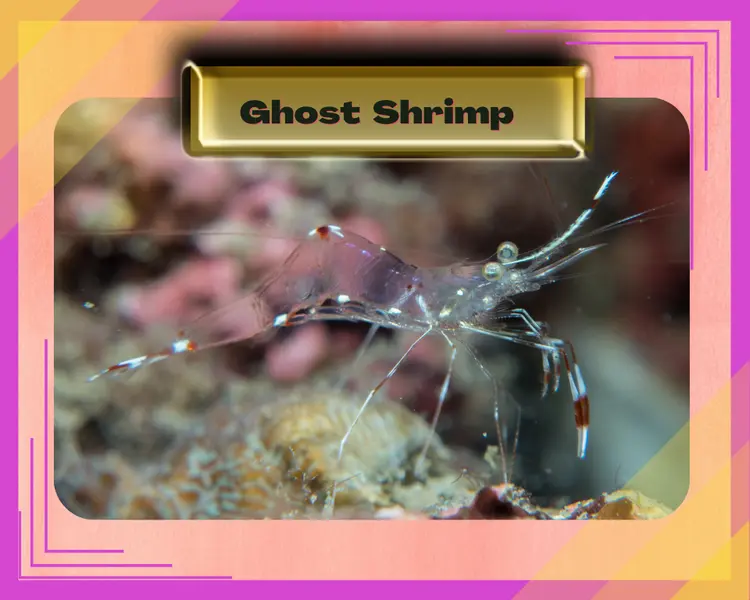
Belonging to the Atyidae family, the ghost shrimp (Palaemonetes paludosus), also commonly referred to as the glass shrimp, is a popular and unusual choice for many aquarium enthusiasts.
Usually only reaching a length of about an inch or so, these little guys are translucent white or light tan in coloration with long antennules. They’re social animals and do best in groups of 6 or more, which makes them a perfect addition to any community aquarium.
Although they are peaceful by nature, their small size and peaceful demeanor make them susceptible to being bullied by larger tankmates. As such, it’s important to provide plenty of hiding places in the form of plants, rocks, and driftwood for them to seek refuge.
Ghost shrimp are omnivorous and will accept most common aquarium foods, but they particularly enjoy algae wafers and shrimp pellets. Providing them with a well-rounded diet will help ensure that they remain healthy and active.
These little guys are not great algae eaters but will help keep your tank clean along with other algae eaters. They need a Ph between 7-8 and a temperature between 65 to 78. They need a light-colored substrate, copper-free water, and some java moss.

Bamboo Shrimp: Autopsies Moluccensis
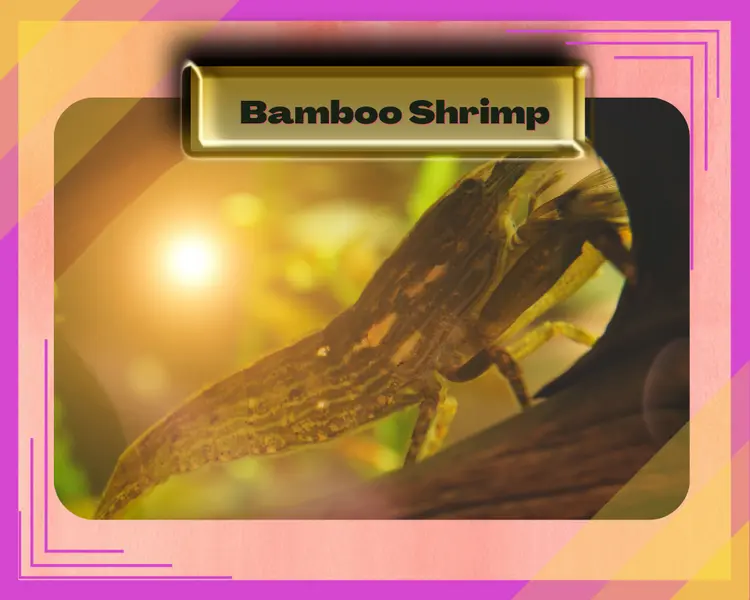
Bamboo shrimp are a type of freshwater shrimp that are native to Southeast Asia. They get their name from their long, bamboo-like legs, which they use to filter food from the water. Bamboo shrimp are peaceful creatures that make a great addition to any aquarium.
They are reddish-brown in color and can grow up to 2 inches long. Bamboo shrimp prefer a neutral Ph of 7 – 7.5 and a temperature of 75-81 degrees Fahrenheit. They do best in tanks that are at least 10 gallons in size and have plenty of hiding places.
Bamboo shrimp are Omnivores and will eat just about anything, but they especially love algae wafers and shrimp food. When setting up a tank for bamboo shrimp, be sure to use dark but fine substrates, copper-free water, and plenty of rocks.

Grass Shrimp – Palaemonetes Pugio
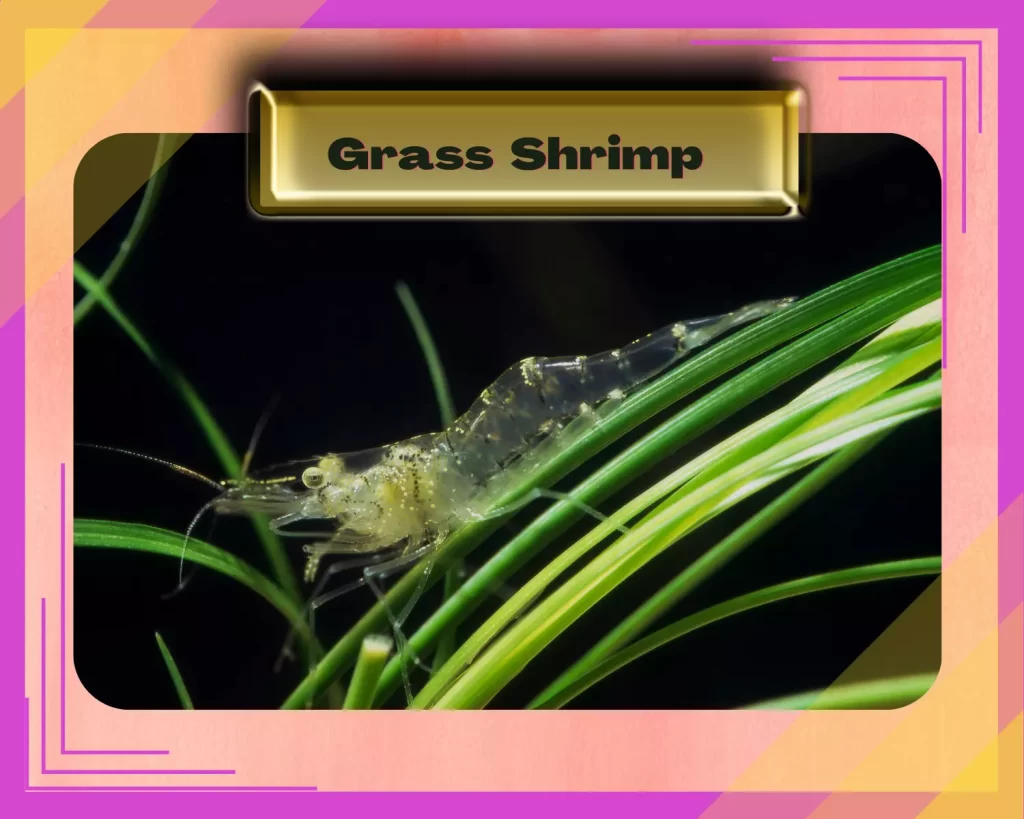
Grass shrimp are one of the most peaceful and low-maintenance creatures you can have in your aquarium. They blend in beautifully with a green carpet, and they don’t need much to thrive.
A pH of 7 to 7.5 and a temperature of 65 to 80 degrees Fahrenheit is perfect for them, and they can live happily in a tank as small as 10 gallons. They don’t need much feeding, either – just some algae wafers when necessary.
The main thing they need is low nitrate levels in their water. And what do they eat? Just about anything – decay, plant matter, you name it. So if you’re looking for a hassle-free addition to your aquarium, grass shrimp is the way to go.

Snowball Shrimp – Neocardina Zhangiajiensis Var
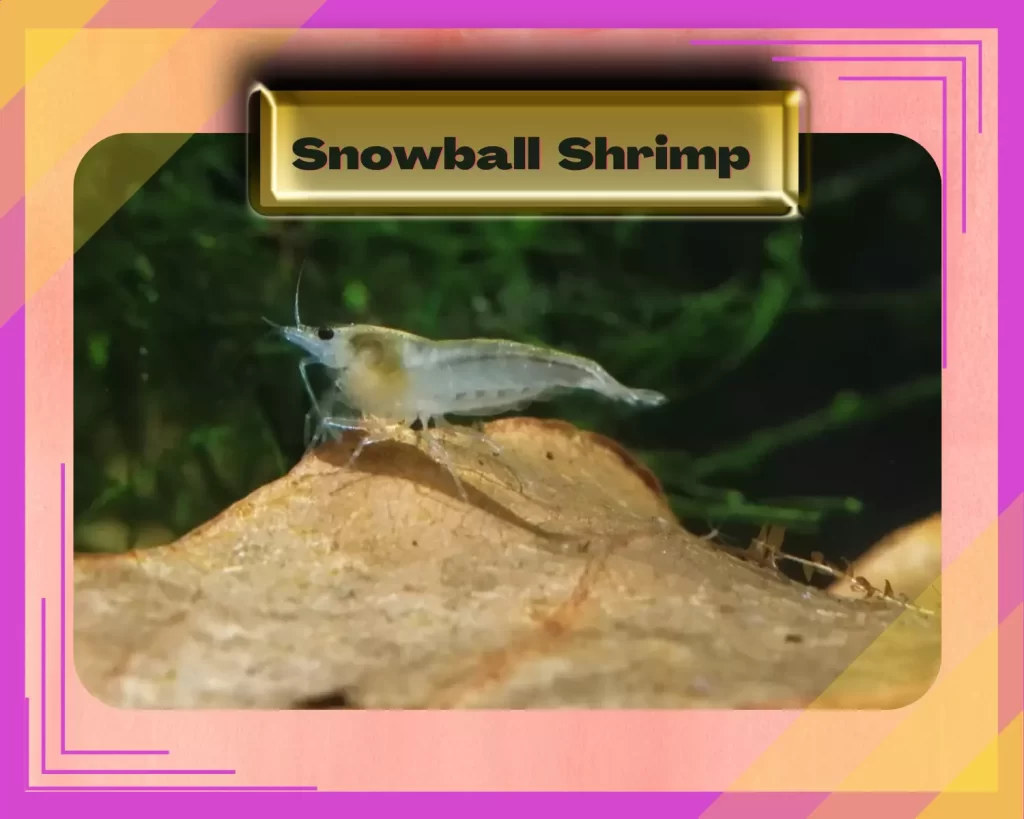
Snowball shrimp are wonderful little creatures that are perfect for any aquarium. They are peaceful and easy to care for, and they will help to keep your tank clean.
Snowball shrimp prefer colder waters, ( 64 – 72 degrees Fahrenheit) so they may not do well in a tropical aquarium.
However, they will thrive in a tank that is at least 5 gallons in size. They need a pH of 7 to 7.5. Snowball shrimp are scavengers, so they will eat algae and other decaying matter.
They also need plants in their tank to get the biofilm that they need to survive. So if you’re looking for a low-maintenance addition to your tank, consider getting some snowball shrimp!
They don’t need much feed except for some occasional algae wafers or shrimp food.

Choosing Algae eaters
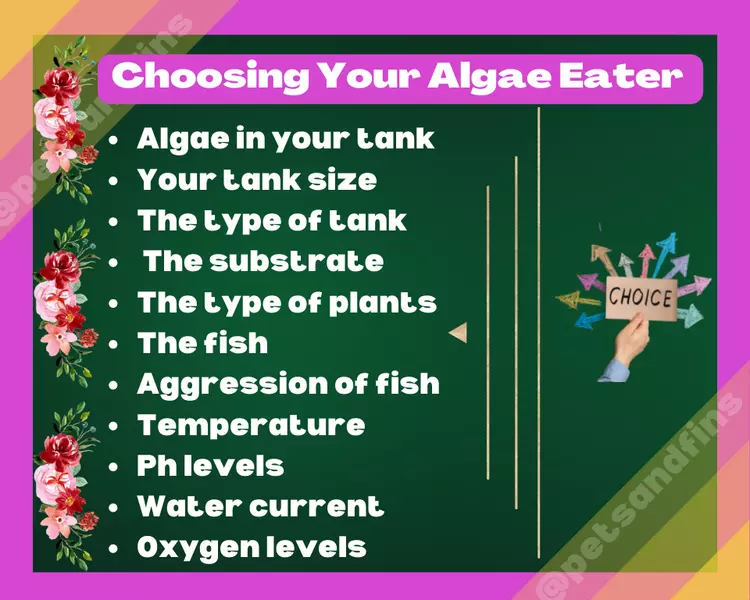
When it comes to choosing algae eaters, there are a few things you’ll need to take into consideration.
- First, what type of algae is present in your tank?
- Second, what is the size of your tank?
- Third, what type of tank do you have – freshwater or saltwater?
- Fourth, what’s the substrate and plant life like in your tank?
- Fifth, what fish do you have and how aggressive are they? Sixth, what is the temperature of your water?
- Seventh, what are the pH levels of your water?
- Eighth, is there a strong water current in your tank?
- Ninth, what are the oxygen levels in your tank? All of these factors will play a role in choosing the right algae eater for your aquarium.
Wrapping Up:
As any aquarium owner knows, algae can quickly become a problem if it is not kept in check. Not only does it affect the appearance of the tank, but it can also lead to poor water quality and health problems for fish and plants. One of the best ways to control algae growth is to keep Algae eaters in the tank.
These little fish help to keep algae levels under control by grazing on the algae throughout the day. However, not all Algae eaters are created equal, and it is important to choose the right species for your aquarium. Depending on the size of your tank and the other occupants, you may want to consider Algae eaters such as fish, snails, or shrimps.
By choosing the best Algae eater, you can ensure a healthy environment for all of your fish and plants. Which algae eater did you select and how did this article help you? Do let us know and we would be glad to hear from you!



